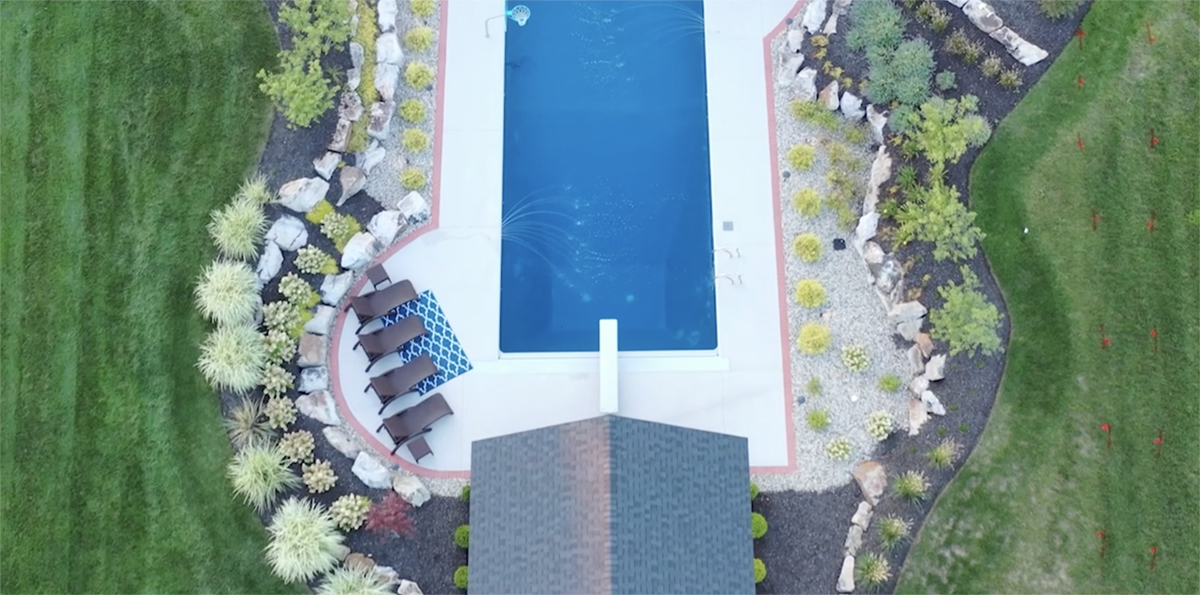We often get asked the question, what is an FPV drone and how is it different from a “regular” drone? FPV stands for first-person-view, and this is exactly how the pilot flies the drone – through a headset similar to a VR headset that displays the drone camera in real time. This allows the pilot to make tighter maneuvers. You might have heard of these types of drones referred to as “racing drones” because they are popular with drone racing enthusiasts. Both standard and FPV drones have their own strengths when it comes to the types of drone video they produce.
How FPV Drone & Standard Drones Are Piloted
Commercial grade standard drones offer greater stabilization and precision through a variety of manual and automatic modes. These drones often come with software that uses waypoints, which allows the drone to use its GPS system to capture the same precise shot at different times – allowing the video editor to pan smoothly between shots, such as we did for this Indianapolis music venue to showcase their different events.
FPV drones typically do not have these automatic features and are more difficult to pilot. This means you may have more difficulty finding an FPV pilot. At RadBot Video Production, we spent a significant amount of training to be able to offer FPV drone videography in-house in the Indianapolis area.

Space Requirements
In general, standard drones are designed for outdoor use only with a few exceptions, such as small “toy” models marketed towards recreational users or mini-drones fitted with prop guards. The video capabilities of most of these drones however, are not ideal for professional video production. It is also important to note that drone propellers, if not fitted with prop guards, can cause injury or property damage, so it is not recommended to fly a standard drone in close quarters. Small FPV drones fitted with a high-quality camera such as the GoPro Hero 10 Bones and prop guards are a good solution for capturing difficult shots in close quarters or near people.
Drone Video Cinematography Styles
So, which drone is best? It depends on the type of shot you are trying to achieve. Here are some examples:
Standard drones are best for:
- Cinematic pans that stay perfectly level
- Longer duration flights
- Time-lapses
- Before/After shoots or progress shoots (when the same shot needs to be taken each time)
FPV drones are best for:
- Interior shoots or in close quarters with people
- An immersive feel, like a bird’s-eye view where you are following the action
- Sports or car racing videos, following fast-paced action
- When precise, even shots are not needed
Still have questions about which drone type best fits your needs? Let us know in the comments or drop us a line here.
-Sara E. Jones, CEO & Co-founder, RadBot Video
